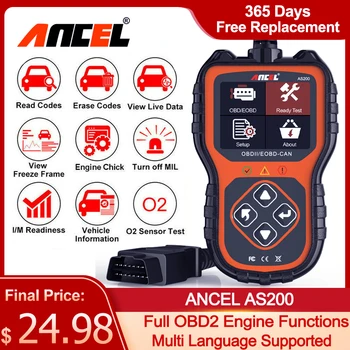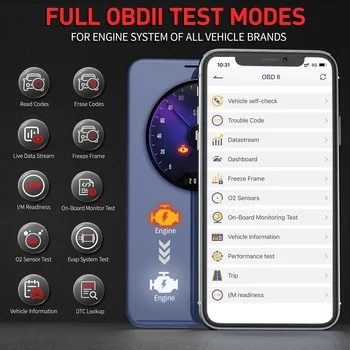OBD2 Scanner
An OBD2 scanner is a diagnostic tool that plugs into your vehicle’s OBD-II port (usually located under the steering wheel) to read and interpret diagnostic trouble codes (DTCs). These codes indicate potential issues with your vehicle’s systems, such as the engine, transmission, or emissions control system.
Why use an OBD2 scanner?
- Early detection of problems: By reading DTCs, you can identify potential issues before they escalate into major problems.
- DIY diagnostics: You can diagnose many common car problems yourself, saving time and money on mechanic visits.
- Monitor vehicle performance: You can track various parameters like engine RPM, fuel consumption, and vehicle speed.
- Reset check engine light: Once you’ve fixed the issue, you can clear the DTC and turn off the check engine light.
How does an OBD2 scanner work?
- Connection: You plug the OBD2 scanner into your vehicle’s OBD-II port.
- Communication: The scanner communicates with your vehicle’s onboard computer.
- Code Reading: The scanner reads the DTCs stored in the computer’s memory.
- Data Interpretation: The scanner translates the DTCs into human-readable information.
- Display or App: The information is displayed on the scanner’s screen or a connected smartphone app.
Types of OBD2 Scanners:
- Basic Scanners: These are simple devices that can read and clear DTCs.
- Advanced Scanners: These offer more features, such as live data monitoring, sensor data, and advanced diagnostic capabilities.
- Smartphone-Based Scanners: These connect to your smartphone via Bluetooth or Wi-Fi, allowing you to use a mobile app to read and interpret data.
By using an OBD2 scanner, you can take better care of your vehicle and potentially save money on maintenance costs.
OBD2 Scanner
OBD2 Scanner
OBD2 Scanner
OBD2 Scanner
OBD2 Scanner
OBD2 Scanner
OBD2 Scanner
OBD2 Scanner
























